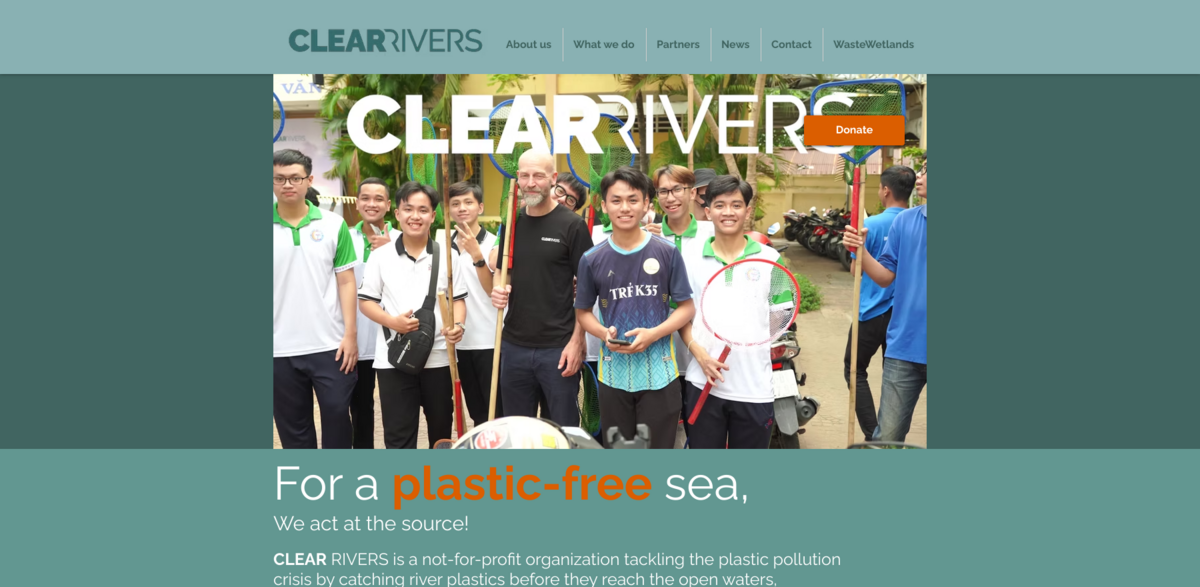What is the Clear Rivers Project?
CLEAR RIVERS is a not-for-profit organization tackling the plastic pollution crisis by catching river plastics before they reach the open waters. The project goes beyond just collecting plastics; it organizes cleanups, educational workshops, and recycles the retrieved litter into new durable products. Their mission? To stop plastic pollution at its source and contribute to a circular economy. Operating internationally, CLEAR RIVERS uses an integrated approach built on five core pillars that guide their efforts to create cleaner, healthier environments for all.
Main Benefits of the Clear Rivers Initiative
Here are some key facts and figures that highlight the impact and importance of this project:
- 80-95% of ocean plastics enter the seas through rivers, making river cleanup crucial.
- In many cities, water collects at the lowest points, causing litter to accumulate in rivers.
- CLEAR RIVERS retrieves plastics directly in cities and ports, preventing the growth of the plastic soup in oceans.
- Thousands of marine animals, including birds, seals, turtles, and whales, die each year due to plastic ingestion or entanglement.
- Plastics break down into micro-particles that enter the human food chain.
- Over the past decade, CLEAR RIVERS has implemented projects in countries like the Netherlands, Belgium, Romania, Hungary, Indonesia, and Malaysia.
- They have installed litter traps, organized cleanups, developed educational programs, and created circular products such as floating parks and building materials.
How Clear Rivers Works: The Five Pillars
The foundation of CLEAR RIVERS’ work rests on five essential pillars. First, they organize cleanups to clear riverbanks and shores. Second, they implement passive systems—like litter traps—to retrieve litter from waterways. Third, their educational programs empower younger generations to take action. Fourth, they raise awareness about plastic pollution and its solutions. And finally, they give new value to retrieved plastics by transforming them into durable building materials and products. This holistic approach ensures that the problem is tackled from multiple angles.
Innovative Solutions: From Litter Traps to Floating Parks
One of the standout innovations is the use of litter traps installed in rivers and harbors. These traps passively collect plastics before they reach the sea, making retrieval easier and more efficient than trying to clean up the open ocean. Plus, plastics caught near the source tend to be in better condition, which means they can be recycled into high-quality materials. For example, the building blocks of CLEAR RIVERS’ floating parks are made from these retrieved plastics. These parks not only beautify urban harbors but also enrich ecosystems by adding vegetation and creating nesting spaces for birds. Pretty cool, right?
Education and Awareness: Empowering Communities
Education is a huge part of CLEAR RIVERS’ strategy. Their programs focus on informing people—especially younger generations—about the plastic pollution crisis and how they can help. By raising awareness, they inspire communities to take action, whether that’s participating in cleanups or supporting sustainable practices. This empowerment is key to creating lasting change, because tackling plastic pollution isn’t just about cleanup; it’s about prevention and shifting mindsets.
Project Impact and Sustainable Development Goals (SDGs)
- SDG 6: Clean Water and Sanitation – by improving water quality through litter removal.
- SDG 11: Sustainable Cities and Communities – by creating cleaner urban environments.
- SDG 12: Responsible Consumption and Production – through recycling and circular economy initiatives.
- SDG 13: Climate Action – by reducing pollution that harms ecosystems.
- SDG 14: Life Below Water – by preventing plastics from entering oceans and protecting marine life.
- SDG 15: Life on Land – by improving river ecosystems and habitats.
Looking Ahead: Expanding the Reach
Starting from their Rotterdam office, CLEAR RIVERS has successfully realized the Recycled Park project, a floating park made entirely from recycled plastics retrieved from local rivers. After this success, the approach is being introduced to more rivers and harbors worldwide. The goal is clear: prevent plastics from reaching the seas, raise awareness, educate communities, and give new life to retrieved plastics. It’s a local and circular approach with global ambitions—because saving our oceans starts with saving our rivers.





















